A Flock of Questions
The future seemed bright when Hudson Foods announced it was coming to Western Kentucky back in the mid-1990s. But the poultry industry hasn't worked out as some had envisioned. Now that Tyson Foods has taken over the reins, complaints of stench, disease and pollution have continued to hound the industry. Claude and Pat Gish operate two houses on their small farm near Sebree, Ky., and only have one regret. They wish they'd have built four houses instead of two. As for the rest of the community, there are many other questions to be answered about the viability of the poultry industry.
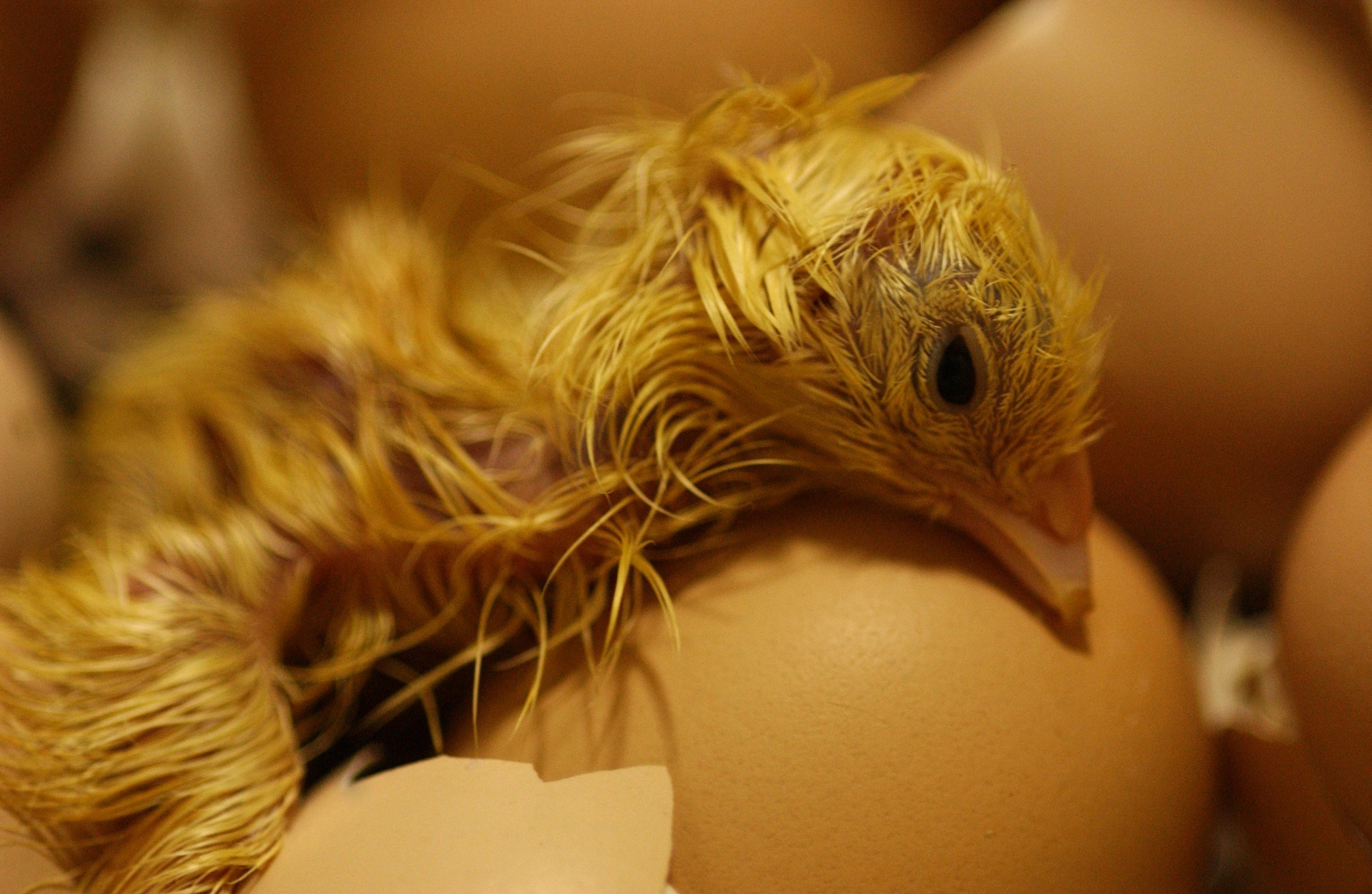
A wet chick takes a well-deserved rest after a 21-day incubation and emergence from its shell at the Tyson Hatchery.
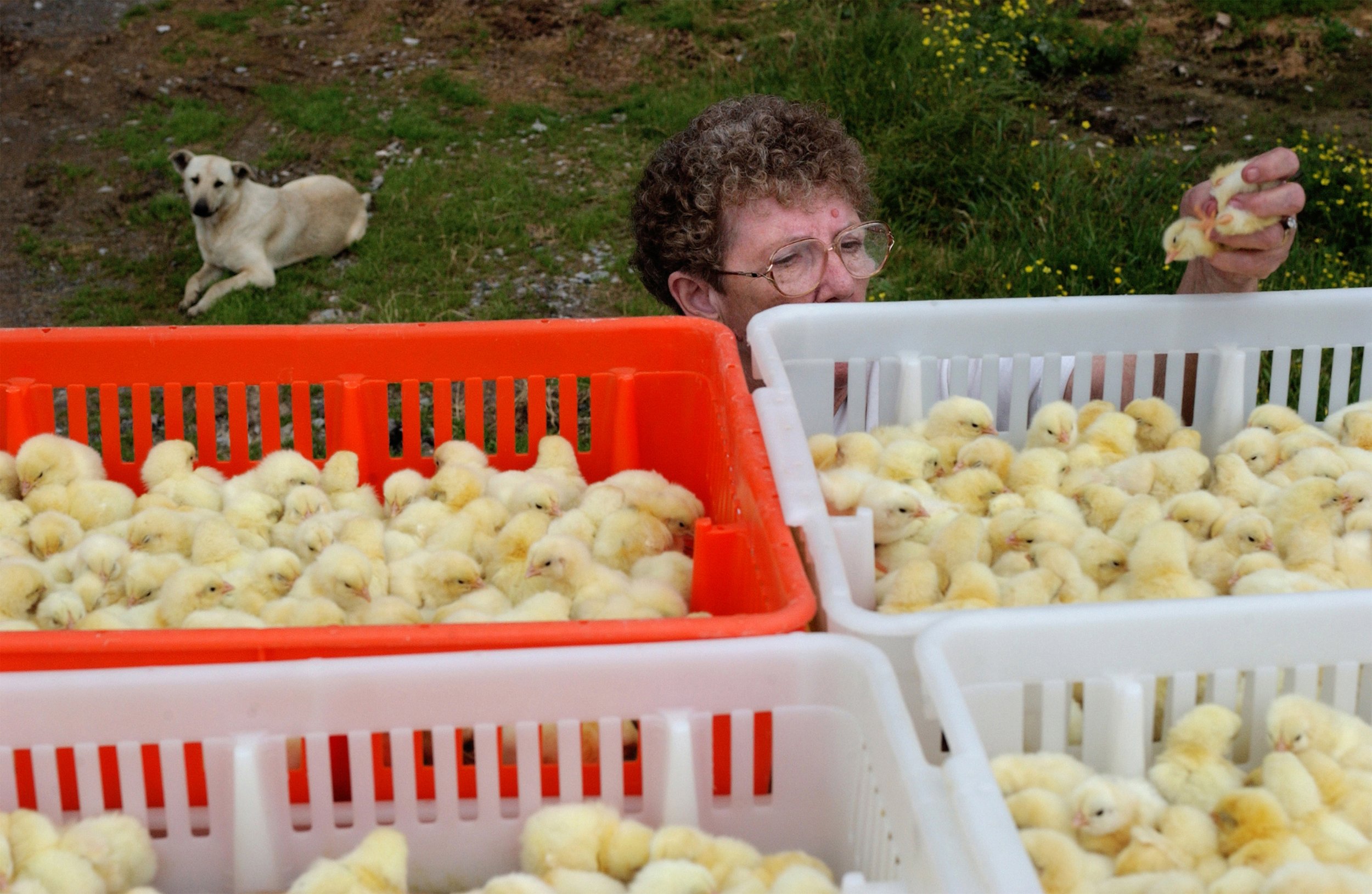
Pat Gish checks on the condition of the newly delivered chicks before they're "dumped" into the chicken houses. She was happy with this batch of chicks noting they were a spunky bunch.

Chick dumper Sherman Sparks empties a crate of chicks into one of Claude and Pat Gish's chicken houses. Claude Gish, driving the tractor, slowly heads down the length of the chicken house as the "dumpers" unload the crates.
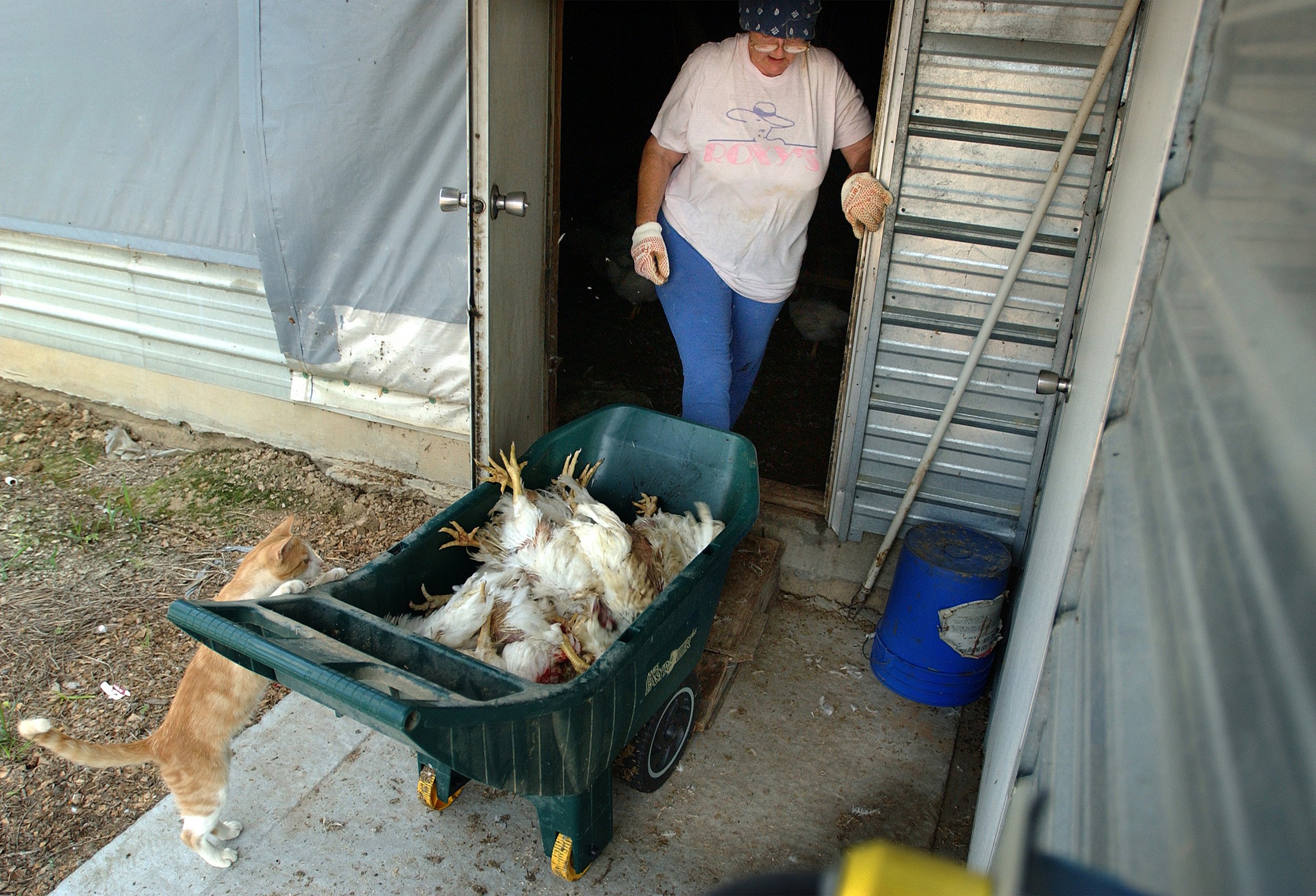
One of the family cats takes a look at the morning's dead chickens collected by Pat Gish in expectation of his daily chicken dinner. Not all the birds survive the seven-week maturation process and the twice-daily removal of the carcasses in a timely manner helps control the possibility of disease.

At their prime, these chickens are ready to be gathered and delivered to Tyson Foods processing plant at their complex near Robards, Ky. A specially formulated litter is used in the chicken houses to keep the moisture down, thus holding the strong ammonia smell in check. After the birds are gone, the top layer of litter is removed, stored in covered piles and used for fertilizer.
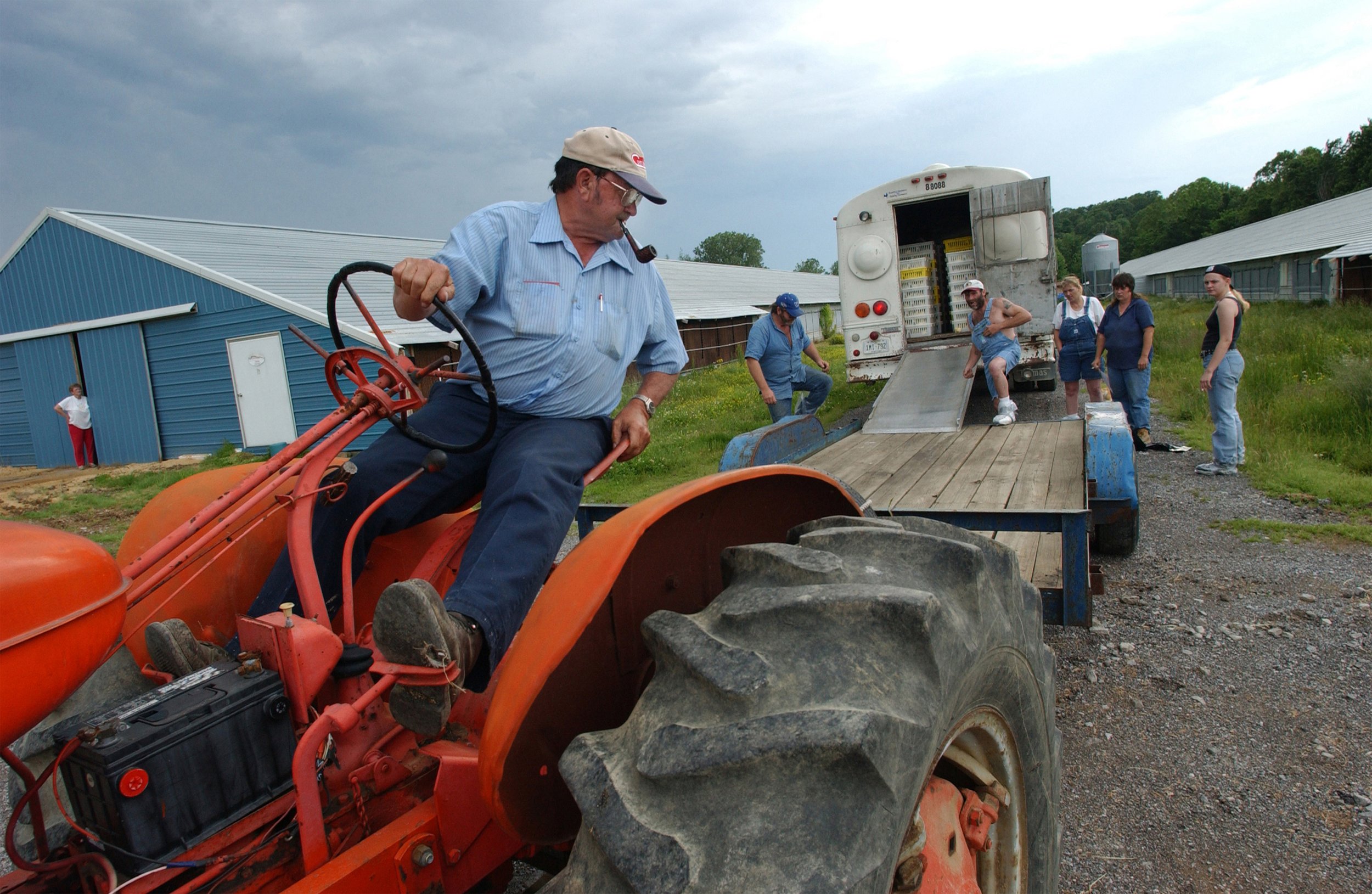
Claude Gish backs up his tractor and flatbed trailer to the Tyson Foods Hatchery delivery bus for the unloading of more than 46,000 chicks to his two chicken houses. The converted school bus is painted completely white to reflect light, windows included, to control the heat in the bus. Even slight fluctuations in the temperature can be deadly to the newborn chicks.

Shackled hind-ends of chickens spin around the processing plant before eventually winding up under plastic and shipped to area membership stores such as Sam's Club in Evansville.
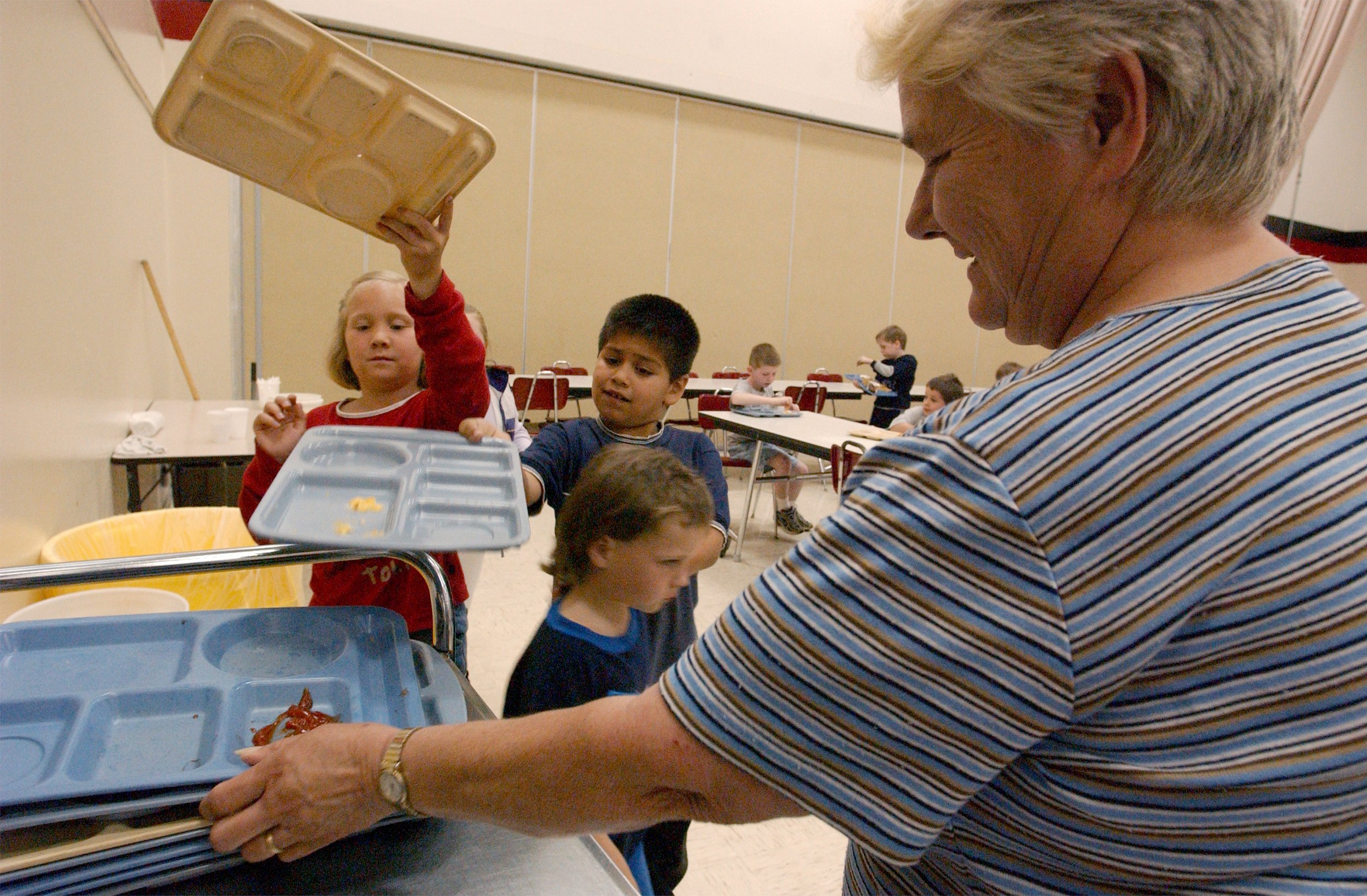
Arsenio Sarmiento, a second-grader at Sebree Elementary School, tries to find an empty path to stack his tray after lunch in the cafeteria. With the arrival of Hudson Foods in 1996, the face of Webster County schools began to change as Hispanic workers from Mexico and Central America showed up to work in the new factory.
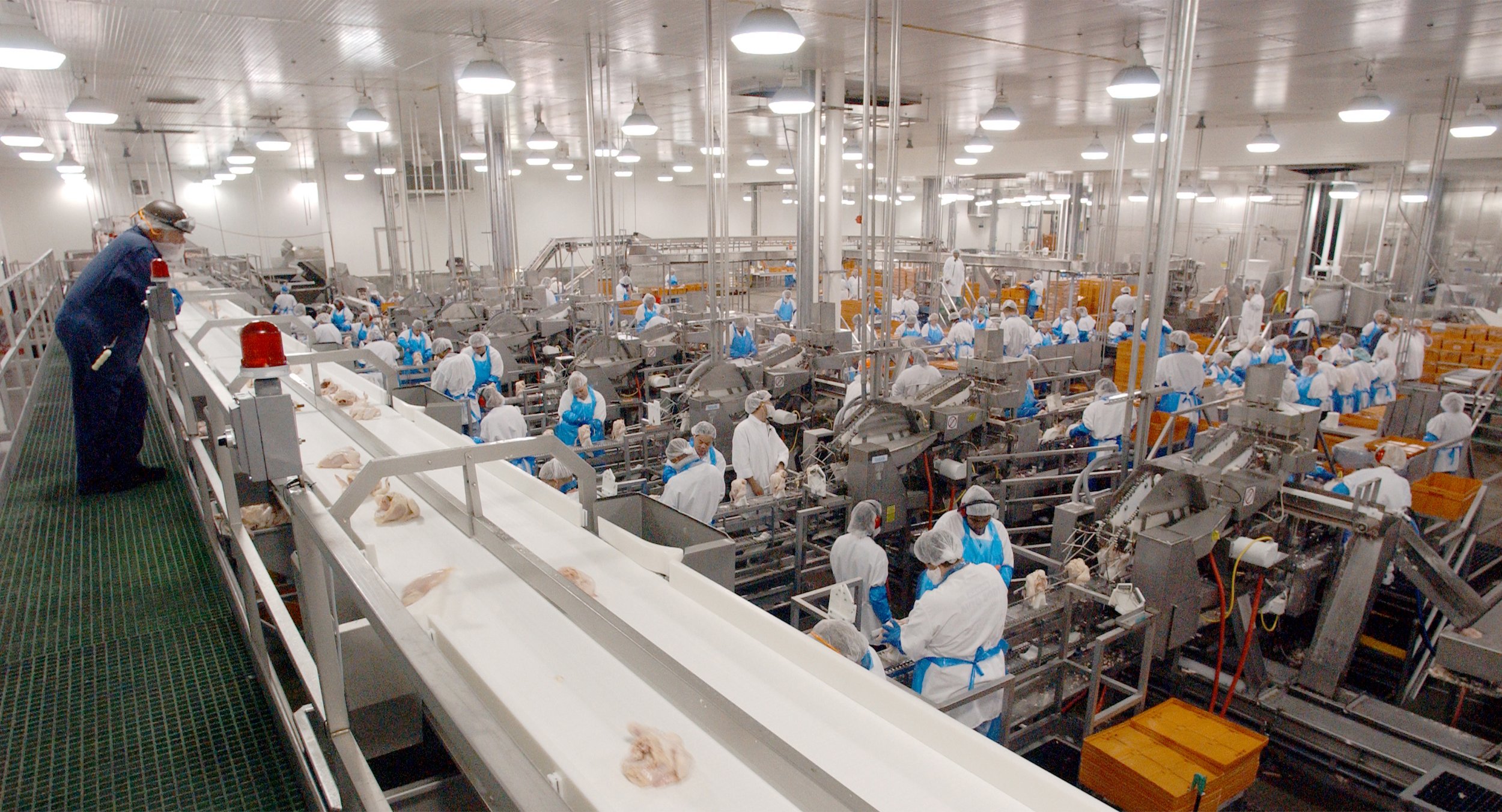
Tyson Foods processing area runs 24-hours-a-day and employs only full-time workers who receive health and financial benefits.

"This really means a lot to the seniors," Beverly Duncan tells the Tyson Foods employees Dave Phillips, right, and Jeff Power, left, as they load up the van for the Housing Authority of Henderson. "I'm overwhelmed. Thank you. Thank you. Thank you." The chicken plant near Robards, Ky., donated 37,000 pounds of chicken breasts to the Volunteer and Information Center in Henderson, Ky.

Cory Hallum whose father, Michael Hallum of Madisonville, Ky., died before he was born, keeps his father's pictures on his dresser as well as a memorial hanging on the wall of his room near his bed. An accident at the Tyson Foods rendering plant near Robards, Ky., on July 22, 1999, killed Hallum, as well as co-worker James Dame Jr., of Slaughters, Ky.